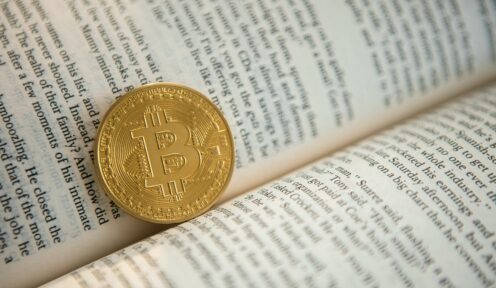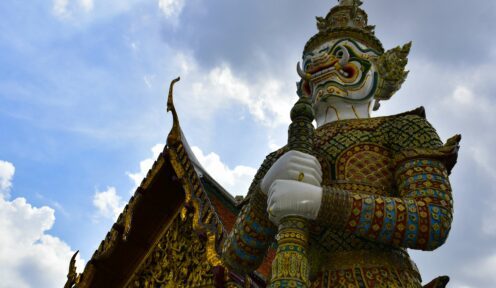
26.02.2024
Reasons why some technology entities do not protect their creations: TSMC, Tesla …
 Por
Furió Párraga, Ascensión
Por
Furió Párraga, Ascensión If in the previous collaboration (Intellectual Property Management in the Digital Age) we explained why IP should be protected, today we are going to explain why there are entities that deliberately choose not to protect their IP. The TSMC case is paradigmatic, but so are, for other reasons, the cases of Tesla, Linux and Wikipedia.
There are a number of reasons why some leading technology organisations choose not to protect their creations through patents or copyrights, preferring to restrict access through other mechanisms:
Unfortunately, this quiz has a limited amount of entries it can recieve and has already reached that limit.
Business Secrecy:
- Protecting information as a trade secret can be an effective strategy to maintain a competitive advantage.
- It allows greater flexibility to modify or improve the technology without having to disclose details to the public.
- It makes it difficult for competitors to copy or imitate the technology.
Market strategy:
- Offering limited access to technology can create exclusivity and increase its perceived value.
- It allows segmenting the market and offering different levels of access to different types of customers.
- It can create an ecosystem of technology-dependent partners and collaborators.
Speed of innovation:
- The patent process can be slow and costly, which can slow the pace of innovation.
- Sharing technology with others can accelerate the development and adoption of new standards.
- It allows for open collaboration and community feedback to improve the technology.
Philosophy:
- Some entities believe in openness and free access to technology to foster innovation.
- They believe that patents can create barriers to entry and limit the development of new technologies.
- They seek to contribute to the common good and the advancement of knowledge without restrictions.
Trade secret:
- TSMC considers its manufacturing processes to be a trade secret and that registering them would expose them to competitors.
- Trade secret protection allows them to maintain a competitive advantage over their rivals.
- It makes it difficult for competitors to copy its manufacturing technologies.
Cost and time:
- Registering the intellectual property of chip manufacturing can be a costly and time-consuming process.
- TSMC prefers to invest its resources in research and development to keep innovating.
- Patent registration can be a complex and cumbersome process.
Flexibility:
- Not registering intellectual property gives them more flexibility to adapt their manufacturing processes to the needs of their customers.
- It allows you to make changes and improvements to your processes quickly and without restrictions.
- It facilitates collaboration with its customers in the development of new chips.

Si te ha interesado este artículo no dudes en leer:
Digital Businesses and Intellectual Property Laws: A Guide for Startups
The TSMC case
TSMC is a Taiwanese semiconductor manufacturing company that has become the world’s largest chip manufacturer. TSMC does not register the intellectual property of its chip manufacturing for several reasons:
Physical access to TSMC’s chip factories:
Access to TSMC’s chip factories is extremely restricted and measures are taken to protect the security and confidentiality of its manufacturing processes. Some of the most important aspects to note are:
Perimeter security:
- TSMC’s factories are located in secure areas with 24/7 surveillance.
- Physical security measures such as fences, security cameras and motion sensors are used.
- Access to the facilities is controlled by security guards and access control systems.
Access control:
- Only authorised personnel are allowed access to the production areas of the factories.
- Employees must pass through various levels of security, such as fingerprint scanners and facial recognition.
- Access cards and tracking systems are used to control the movement of personnel within the facility.
Security protocols:
- Employees must follow strict safety protocols, such as wearing protective clothing and following specific procedures for handling equipment and materials.
- Regular security audits are conducted to verify compliance with protocols.
- Disciplinary measures are applied to employees who violate security rules.
Confidentiality:
- All employees, suppliers and visitors must sign confidentiality agreements.
- It is forbidden to take photos or videos inside the factories.
- Confidential information about TSMC’s manufacturing processes must not be shared with third parties.
Guided tours:
- TSMC offers limited factory tours for customers, investors and government officials.
- These visits are subject to strict security and confidentiality measures.
- Visitors must follow a predefined itinerary and are not allowed access to sensitive areas of the factories.
Other examples:
- Tesla: Sharing some of its patents openly to accelerate the development of electric vehicles.
- Linux: An open source operating system that allows anyone to access, modify and distribute the code.
- Wikipedia: A free online encyclopaedia based on the open collaboration of thousands of volunteers.
The Tesla case: Why Tesla and Elon Musk decided not to protect electric car patents:
Accelerate the adoption of technology:
- Tesla and Elon Musk believe that the best way to accelerate electric car adoption is to open their patents to competition.
- By allowing other manufacturers to use its technology, Tesla expects more electric vehicles to be produced in greater volume, which in turn will reduce costs and increase accessibility.
- Sharing technology can spur innovation: By sharing its patents, Tesla hopes that other manufacturers will bring new ideas and improvements to electric car technology.
- Reducing dependence on subsidies: Tesla hopes that competition in the electric car market will help reduce dependence on government subsidies.
Create an open ecosystem:
- Tesla wants to create an open ecosystem around the electric car, similar to the ecosystem that exists around the personal computer.
- By allowing other manufacturers to use its technology, Tesla expects a wide range of electric car compatible products and services to be developed.
- Collaborate with other manufacturers: Tesla is willing to collaborate with other manufacturers to develop and produce electric vehicles.
- Knowledge sharing: Tesla is willing to share its knowledge and expertise with other manufacturers.
Benefit from competition:
- Tesla believes it can benefit from competition in the electric car market.
- Competition can help Tesla improve its products and services.
- Competition can help Tesla maintain its leading market position.
Create a social movement:
- Tesla wants to create a social movement around the electric car.
- By opening up its patents, Tesla hopes to get more people involved in the transition to a clean energy economy.
- Promoting sustainability: Tesla wants to promote sustainability and the fight against climate change.
- Inspire others: Tesla wants to inspire others to develop innovative and sustainable technologies.
If you liked this article, you may also find it interesting to read the following one:
Patent Registration Process for Startups: From Idea to Legal Protection
Contacto No te quedes con la duda, contacta con nosotros. Estaremos encantados de atenderte y ofrecerte soluciones.












